What is Metal Fabrication? A Beginner’s Guide
Metal is a part of almost everything around us. Whether it’s the car you drive, the spoon you eat with, the building you live in, or the machines in factories, metal plays an important role. But metal doesn’t naturally come in the shapes we use. It has to go through a process to become useful, and that process is called metal fabrication. In this guide, we’ll explore what metal fabrication really means, how it works, and why it’s such a big deal in the world of manufacturing and construction.
Understanding Metal Fabrication in Simple Words
Metal fabrication is the process of turning raw metal materials into finished parts or products. This involves different steps like cutting, bending, joining, and shaping metal into the desired form. Think of it like baking a cake. You start with ingredients like flour, eggs, and sugar, and through mixing and baking, you turn them into a cake. In the same way, metal starts as sheets or rods, and through different processes, it becomes things like pipes, machine parts, railings, or even car frames.
This work is usually done in workshops or factories known as fabrication shops or metal fabrication facilities. Skilled workers, fabricators or metalworkers use machines and tools to cut and shape metal. Some of these processes are manual, but many use machines or computers for more precision.
At Kirmell Ltd, we offer a full range of fabrication services, including CNC machining, laser cutting, presswork, and welding. Our team works with clients across the UK and EU to deliver high-quality metal parts that meet industrial standards and tight production deadlines. Contact us now and get in touch with our expert if you are looking for industrial manufacturing services.
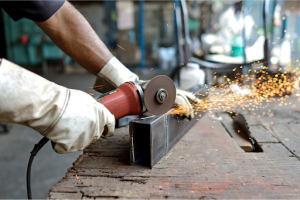
Why is Metal Fabrication So Important?
Without metal fabrication, we would not be able to build many of the things that are essential to our daily lives. From simple tools like wrenches and kitchen knives to large structures like buildings, aeroplanes, and bridges, metal fabrication is what makes it all possible. It allows engineers and designers to bring their ideas to life by shaping metal in ways that suit different purposes.
Metal is strong and durable and can handle heat, pressure, and heavy loads. That’s why many industries such as automotive, aerospace, construction, energy, agriculture, and even medicine use it. Imagine building a skyscraper or a ship without fabricated metal parts; it simply wouldn’t work. Metal fabrication gives us the power to build strong, long-lasting, and efficient products.
How the Metal Fabrication Process Works
Here is a detailed overview of the process of how metal fabrication works:
Design and Planning
Everything starts with a plan. Engineers or designers create technical drawings or digital blueprints of the product. These blueprints include the size, dimensions, shape, and materials required. Today, most of this is done using computer software like CAD (Computer-Aided Design) to ensure high precision.
Material Selection
Once the design is ready, the next step for sheet metal fabrication is choosing the right metal. The choice depends on the product’s purpose. For example, stainless steel is used for kitchen items, aluminium is used for lightweight parts like aeroplane components, and carbon steel is used for construction structures.
Cutting the Metal
The raw metal comes in sheets, tubes, or bars, and it needs to be cut down to size. Cutting is done using tools like:
- Laser cutters (for clean and precise cuts)
- Plasma cutters (for thick metal sheets)
- Shears or saws (for simpler cuts)
- Waterjet cutters (when no heat should be applied)
Each method is chosen based on the type and thickness of the metal and the level of detail needed.
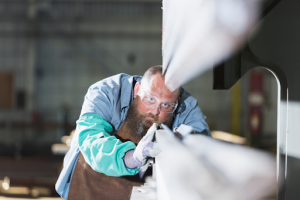
Forming and Shaping
After cutting, workers bend or shape the metal into the required form. Press brakes apply pressure to fold or curve the metal. Operators use rolling machines to create cylinders or rounded items. This forming process gives the metal its basic structure.
Welding and Assembling
Workers now join the cut and shaped pieces together. The most common way is welding, which melts the edges of the metal and fuses them. Other joining methods include:
- Riveting
- Screwing or bolting
Using adhesives (in lighter applications)
This step is where the product begins to take its final shape.
Finishing and Surface Treatment
The last step is making the product look good and perform better. Finishing can include:
- Grinding to smooth the surface
- Sandblasting to clean off any debris
- Painting, powder coating, or polishing for appearance and rust protection
Sometimes, manufacturers add special coatings to make the product heat-resistant or water-repellent.
Real-Life Uses of Metal Fabrication
To better understand how common metal fabrication is, let’s look at some real-world examples.
The construction industry relies on metal fabrication to produce steel beams, metal railings, doors, and windows. When it comes to transportation, vehicles like cars, buses, aeroplanes, and trains contain numerous fabricated metal parts—from frames and engine components to smaller pieces like brackets and panels.
Household appliances such as refrigerators, ovens, and washing machines also depend on fabricated metal for durability and structure. Even medical tools, surgical scissors, hospital beds, and machines like X-rays have fabricated metal parts.
If you look around your home, you’ll probably find many items made through metal fabrication, like your kitchen sink, metal shelves, bed frames, or even decorative items like lampstands. It’s truly everywhere.
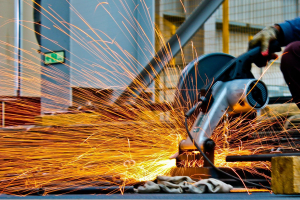
Benefits of Metal Fabrication
Metal fabrication offers countless benefits, like:
High Strength and Durability
Metal parts made through fabrication are strong enough to handle extreme stress, heavy loads, and rough conditions. This is why engineers and builders choose metal for bridges, skyscrapers, vehicles, and tools that need to last a long time.
Design Flexibility and Customisation
One of the best things about metallic fabrications is that they allow for custom designs. Need a one-of-a-kind machine part? No problem. With modern tools and machines, fabricators can shape metal into almost any form, making it easy to meet unique project needs.
Efficiency and Speed
Thanks to automation, CNC machines, and advanced cutting tools, fabricators can quickly fabricate metal parts without compromising quality. This is especially useful when making large batches or meeting tight project deadlines.
Cost-Effective for Large-Scale Production
While initial setup (like buying machines) might be costly, metal fabrication becomes very economical when producing items in bulk. Once programmers program the machines, the machines create hundreds or thousands of identical parts quickly and accurately.
Recyclability and Sustainability
Fabricators can recycle most metals used in fabrication, such as steel, aluminium, and copper. This reduces waste, saves resources, and supports environmentally friendly manufacturing.
Its versatility makes it one of the most valuable processes in the modern industrial world. At Kirmell Ltd, we offer all key stages of the metal fabrication process, from precision presswork and component cutting to custom laser finishing, making us a trusted fabrication partner for the UK and EU industries. Read our brochure to learn more about our services and how we can help you.
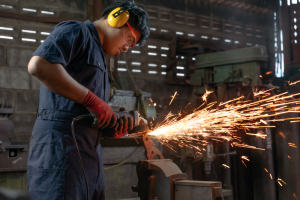
Conclusion
Metal fabrication may sound like a complex topic, but at its core, it’s simply about taking raw metal and turning it into something useful. Fabricators cut, bend, weld, and shape metal to create products that support modern life—from cars and buildings to tools and appliances.
People who learn about metal fabrication gain valuable insight—not just engineers and manufacturers, but anyone curious about how the world around them is built. It’s a process that combines creativity, skill, and technology, and it’s all around us every day.
Looking for a Reliable Metal Fabrication Partner? Trust Kirmell Ltd
If you’re searching for a dependable metal fabrication partner to support your business, Kirmell Ltd is here to help. With decades of experience and a commitment to quality, we serve industries across the UK and EU with precision-engineered components and tailored fabrication services.
Whether you’re looking for a reliable supplier for batch components or help with a one-off development project, we have the expertise, equipment, and flexibility to support you.
Here’s what we offer:
- Presswork: From medium to heavy-duty and deep-drawn pressings, we produce a wide variety of stamped parts using both traditional and CNC-assisted equipment.
- Fabrication & Assembly: Our team handles welded assemblies and fabricated parts with rapid response capabilities and short-run flexibility.
- Laser Cutting & CNC Machining: High-precision, cost-effective solutions for small or large volumes, suitable for industrial and engineering applications.
- Component Development: We work with clients during early design stages and provide prototyping, material selection guidance, and tooling support.
- Custom Products: We produce a wide range of items like pallet feet, nesting plugs, cubicle hardware, ladder standoffs, and more, all manufactured to ISO 9001:2015 and ISO EN1090 standards.
From rapid turnaround and flexible production to long-term supply partnerships, Kirmell is here to simplify your fabrication process and deliver components you can trust.
Ready to get started?
Visit our Contact Page and fill out the form provided to get in touch with our experts.
FAQs
What does a metal fabricator do?
What are examples of metal fabrication?
Is metal fabrication done by hand or by machines?
What materials are used in metal fabrication?
Can I get custom metal parts made?

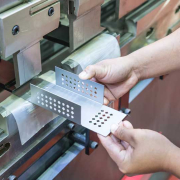
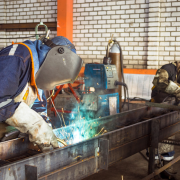
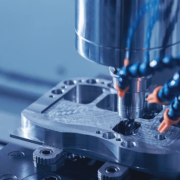
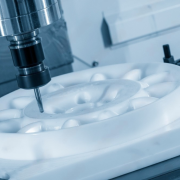
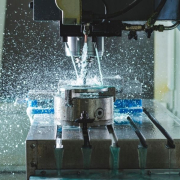
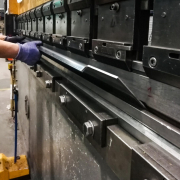
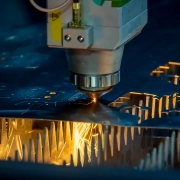
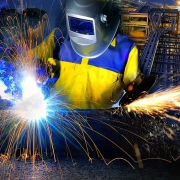



Leave a Reply
Want to join the discussion?Feel free to contribute!